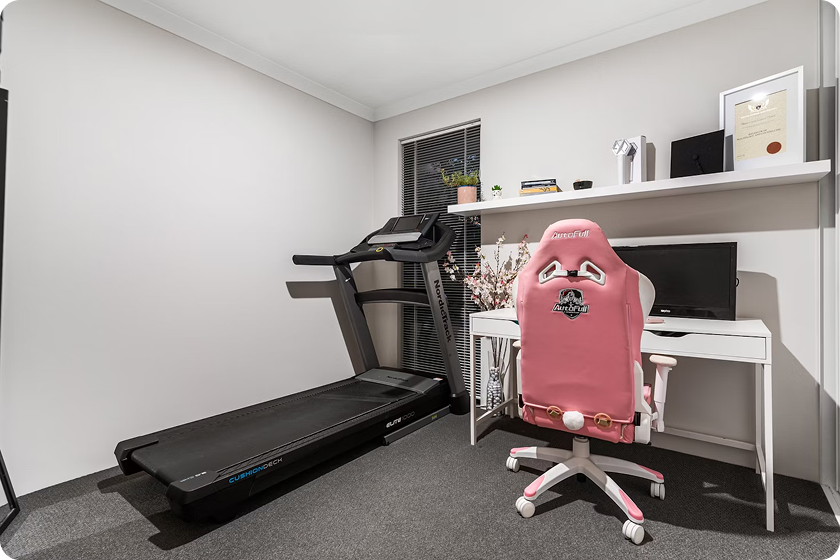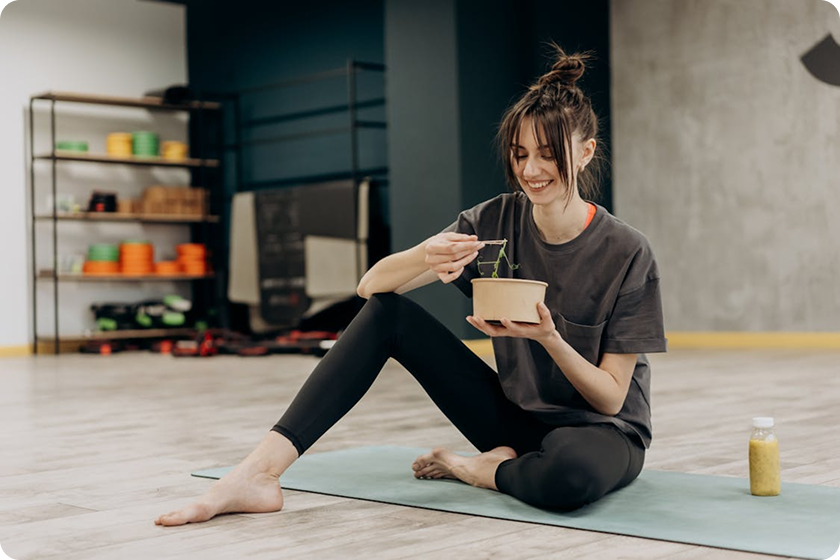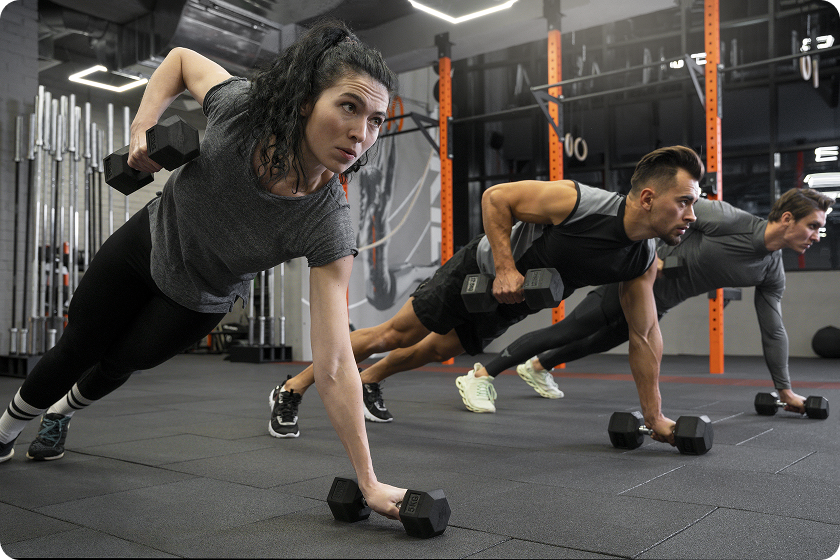Introduction
In 2025, the fitness landscape will be increasingly dynamic, accessible, and tailored to individual needs. Thanks to advancements in technology, novel workout trends, and a heightened focus on holistic health, there has never been a more opportune moment to focus on your physical and mental wellness. Regardless of whether you’re an experienced fitness lover or a newcomer to the field, this all-inclusive guide to exercise and workouts will provide you with the insights, advice, and motivation necessary for success.

It can help you feel great, live longer, and improve many facets of your life in addition to making you look nice. Frequent workout has several proven advantages, ranging from raising your energy and mood to lowering your chance of contracting chronic illnesses. This article will discuss the value of exercise, the various workouts you can include in your routine, the new trends affecting the fitness industry in 2025, and how to customize your fitness plans to achieve particular objectives like increasing muscle growth, weight loss, or cardiovascular fitness.
Why Exercise Matters
Regular physical activity is one of the most effective ways to improve your overall health and wellness. According to the Centers for Disease Control and Prevention (CDC), adults who meet the physical activity guidelines have a lower risk of premature death, better sleep, and reduced risk of chronic diseases such as heart disease, type 2 diabetes, and certain cancers (CDC Physical Activity Benefits).
A recent study published in the American Heart Association’s journal Circulation found that engaging in 300 to 599 minutes of moderate-intensity aerobic workout per week is associated with a 26% to 31% lower risk of all-cause mortality compared to those who do not meet the guidelines (AHA Study on Exercise and Longevity). For those who prefer vigorous workouts, 150 to 299 minutes per week can lead to a 21% to 23% reduction in mortality risk.

Along with improving physical fitness, physical activity can also improve mental health. It can improve self-esteem, reduce anxiety and depressive symptoms, and improve the quality of sleep (HelpGuide Mental Health Benefits). It also improves heart health, muscular strength, flexibility, and endurance, all of which contribute to living a longer, healthier life.
In short, the workout is a cornerstone of physical fitness, supporting everything from weight management to sports training and even bodybuilding. Let’s explore the different types of exercise and workouts you can incorporate into your routine.
Types of Exercise and Workouts
Diversity is crucial in workout routines. Different kinds of workouts offer unique benefits and help keep your regimen interesting and effective. Here are some of the main categories:

Cardio:
These activities get your heart rate up and are excellent for improving cardiovascular health. Cardio workouts are particularly effective for burning calories and enhancing endurance.
Strength training:
Strength training is essential for improving muscle strength, increasing bone density, and elevating metabolism. This form of training is ideal for those aiming to gain muscle mass.
Flexibility and Mobility:
Workouts like those in yoga classes and Pilates classes focus on stretching and improving range of motion, which can enhance posture, reduce injury risk, and promote relaxation. These are great for improving flexibility and mental well-being.
High-Intensity Interval Training (HIIT):
HIIT consists of quick intervals of high-intensity workouts alternated with rest periods. It is extremely effective for burning calories and enhancing cardiovascular fitness, which makes it a favored option for people with busy schedules.
Low-Impact Workouts:
These are gentler on the joints and ideal for beginners or those with physical limitations. Activities like swimming, rowing, or using an elliptical machine fall into this category, offering benefits without excessive strain.
Outdoor Fitness:
Exercising outdoors, such as hiking, cycling, or participating in boot camp classes, can add a refreshing change of scenery and boost motivation, aligning with sports training goals.
Every kind of workout provides unique benefits, and including a variety in your workout routines can assist you in attaining a balanced level of physical fitness.
Designing Your Workout Plan
Achieving long-lasting results requires creating a workout regimen that fits your goals and lifestyle. Here are some workout suggestions that are appropriate for both beginners and experts.

Set Clear Goals:
Determine what you want to achieve, whether it’s for weight loss, muscle-building, improved endurance, or better mental health.
Start Slow:
If you’re new to working out, begin with shorter sessions and gradually increase duration and intensity. Workout tips for beginners include starting with low-impact cardio or home workouts.
Include Variety:
Mix different types of workouts to work different muscle groups and keep things interesting. For example, combine cardio workouts with strength training workouts and Pilates classes.
Schedule Regularly:
Consistency is key. Aim for at least 150 minutes of moderate-intensity or 75 minutes of vigorous-intensity workout per week, as recommended by health guidelines (NHS Physical Activity Guidelines).
Listen to Your Body:
Rest when needed and pay attention to signs of overtraining or injury to maintain health and wellness.
For those new to physical training, starting with low-impact workouts or mini-workouts (e.g., three 15-minute sessions throughout the day) can be less intimidating and just as effective as longer sessions.
2025 Fitness Trends to Watch
The fitness landscape in 2025 is marked by innovation and inclusivity, with several trends leading the way (Gym Desk Fitness Trends 2025):

AI Personal Trainers:
Artificial intelligence is revolutionizing physical training by offering customized fitness routines and real-time feedback through apps and wearables, enhancing personalization (ACE Fitness Trends 2025).
Wearable Technology:
Devices like smartwatches and fitness trackers are rapidly evolving, monitoring heart rate, sleep patterns, and even blood sugar levels to help meet health and wellness goals.
Hybrid Training:
Combining online and in-person workouts allows for flexibility and personalization, catering to both convenience and social interaction, making home workouts and the gym more accessible.
Functional Fitness:
Workouts that mimic everyday movements, such as lifting groceries or climbing stairs, are gaining popularity for their practicality and effectiveness in sports training.
Recovery Tools:
From foam rollers to massage guns, tools that aid in muscle recovery are becoming essential for athletes and casual workouts, supporting muscular strength and endurance.
Inclusive Fitness:
There’s a growing emphasis on making workouts accessible to all, including older adults, people with disabilities, and those of all body sizes, promoting health and wellness for everyone.
These trends reflect a shift towards more personalized, technology-driven, and holistic approaches to physical fitness, ensuring that everyone can find a workout method that suits them.
Exercise for Specific Goals
Whether your goal is to lose weight, build muscle, or improve your heart health, there’s a workout plan tailored just for you.

Exercise for Weight Loss:
Cardio workouts help in burning calories, whereas strength training develops muscle mass, which can enhance your metabolic rate (Healthline Exercise Benefits).
Best Workouts for Abs:
Workouts that focus on the core, including planks, crunches, and leg raises, are great for enhancing muscle strength in the abdominal area, boosting both appearance and functional fitness.
Muscle Building:
Concentrate on strength training through progressive overload by slowly raising the weights or resistance you use. workouts at the gym, such as squats, deadlifts, and bench presses, are very effective.
Cardiovascular Health:
Consistent cardiovascular activities such as jogging, swimming, or biking can enhance cardiovascular health and stamina, lowering the likelihood of heart disease (American Heart Association Recommendations).
Mental Well-being:
Activities like yoga classes, Pilates classes, and even walking can reduce stress and anxiety, promoting mental clarity and relaxation, and contributing to overall health and wellness.
Nutrition and Exercise
Nutrition for physical activity is an essential element of an effective fitness strategy. Adequate nourishment before and following workouts can improve both performance and recovery.

Pre-Workout Nutrition:
Eat a well-rounded meal or snack that includes carbohydrates and protein approximately 1-3 hours prior to working out. For instance, a banana paired with peanut butter offers fast energy along with protein.
Post-Workout Nutrition:
To promote muscle repair and replenish energy, eat a meal or snack that blends protein and carbs for 30 to 60 minutes after a workout. A great option is a fruit smoothie that has been mixed with protein powder.
Hydration:
Consume water prior to, throughout, and following your workout to maintain hydration, particularly if you are participating in vigorous or extended physical activity.
A balanced diet that emphasizes whole foods ensures that you get the energy and nutrients you need to be active and maintain a healthy weight while also promoting nutritional health for physical activity.
Staying Motivated and Safe
Maintaining consistency with your workout regimen can be difficult, yet there are strategies to keep your motivation high.

Set Small, Achievable Goals:
Acknowledge minor achievements, such as finishing a week of workouts, to maintain your motivation.
Find a Workout Buddy:
Working out alongside a friend can enhance the fun of exercising and keep you accountable.
Mix It Up:
Try new activities like HIIT, yoga classes, or outdoor cardio to keep things fresh.
Track Your Progress:
Use a journal or app to log your workouts and see how far you’ve come, boosting motivation.
Safety is also paramount. Always warm up before a workout, use proper form during gym or home workouts, and listen to your body to prevent injuries. Incorporating rest days and using recovery tools like foam rollers can help you maintain muscular strength and avoid overtraining.
Comparison of Moderate vs. Vigorous Exercise
| Aspect | Moderate Exercise | Vigorous Exercise |
|---|---|---|
| Intensity | Raises heart rate and breathing rate | Significantly raises heart rate and breathing |
| Examples | Brisk walking, cycling, and swimming | Running, high-intensity interval training (HIIT) |
| Calories Burned | Moderate amount per minute | Higher amount per minute |
| Health Benefits | Improves cardiovascular health, mood | Greater improvements in cardiovascular health, metabolism |
| Recommended Amount | 150–300 minutes per week | 75–150 minutes per week |
This table highlights the differences between moderate and vigorous workouts, helping you choose the right intensity for your fitness routines and goals (AHA Study on Exercise and Longevity).
Frequently Asked Questions
1. What is the best workout for weight loss?
The most effective weight-management strategy combines cardiovascular and strength training activities. Strength training builds muscle, which can increase your resting metabolic rate, while cardio help you burn calories.
2. How often should I work out?
Aim for at least 150 minutes of moderate-intensity or 75 minutes of vigorous-intensity workouts per week, spread over several days, to support physical fitness.
3. What are the benefits of yoga?
Yoga classes improve flexibility, muscular strength, balance, and mental clarity. They’re also great for stress reduction and can be adapted for all fitness levels, enhancing health and wellness.
4. How can I build muscle at home?
Use muscle-building exercises like push-ups, squats, and lunges, or invest in resistance bands or dumbbells for home workouts. Consistency and progressive overload are key to building muscular strength.
5. Is it better to work out in the morning or evening?
The best time for workout is whenever you can be consistent. Morning workouts may boost energy, while evening sessions can fit busy schedules, supporting physical fitness goals.
Conclusion
In conclusion, physical activity offers numerous advantages for the body, mind, and social life and is crucial for sustaining a healthy lifestyle. You may successfully incorporate fitness into your everyday routine by learning about different workout options, staying up to date with new trends like AI-assisted training and fitness wearables, and tailoring your workout regimens for specific goals like muscle building or weight loss.

What works for one person may not work for another, so listen to your body, stay informed, and keep exploring new ways to move and improve. Whether you’re hitting the gym for gym activity, enjoying home workouts, or joining yoga classes, the key is to stay active, consistent, and enjoy the process.
Begin now, and make the initial move towards becoming a healthier and more content version of yourself. Your body and mind will appreciate your commitment to prioritizing workouts and physical wellness.




